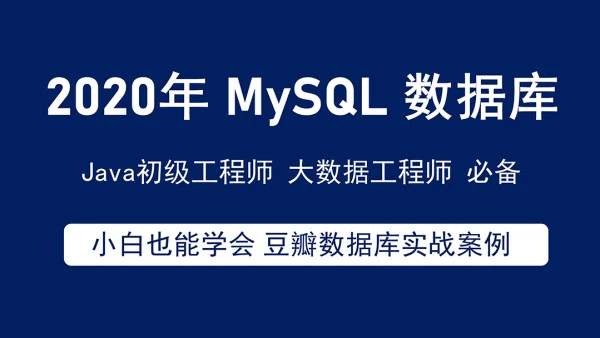您好,登錄后才能下訂單哦!
您好,登錄后才能下訂單哦!
本文主要給大家介紹CAS4.0連接mysql數據庫的詳細步驟,文章內容都是筆者用心摘選和編輯的,具有一定的針對性,對大家的參考意義還是比較大的,下面跟筆者一起了解下CAS4.0連接mysql數據庫的詳細步驟吧。
步驟如下
一:
在cas-4.0.0\cas-server-webapp\pom.xml中添加依賴后(如下方所示),打開cmd在cas-4.0.0\cas-server-webapp文件夾下運行mvn clean package,然后將cas-4.0.0\cas-server-webapp\target下的cas.war包部署至tomcat
Xml代碼
<dependency>
<groupId>org.jasig.cas</groupId>
<artifactId>cas-server-support-jdbc</artifactId>
<version>${project.version}</version>
<type>jar</type>
</dependency>
<!-- https://mvnrepository.com/artifact/commons-dbcp/commons-dbcp -->
<dependency>
<groupId>commons-dbcp</groupId>
<artifactId>commons-dbcp</artifactId>
<version>1.4</version>
</dependency>
<!-- https://mvnrepository.com/artifact/mysql/mysql-connector-java -->
<dependency>
<groupId>mysql</groupId>
<artifactId>mysql-connector-java</artifactId>
<version>5.1.6</version>
</dependency>

二:
本地創建數據庫,并新建表 cas_user,創建語句如下載
Sql代碼
create table cas_user (
id bigint not null auto_increment,
email varchar(255),
username varchar(255) not null unique,
name varchar(255),
password varchar(255),
primary key (id)
) ENGINE=InnoDB;
三:
配置數據庫相關文件,在tomcat-for-cas\webapps\cas\WEB-INF\deployerConfigContext.xml中配置對應的datasource,數據庫地址,用戶名,密碼,以及查詢用戶的sql。需要注意的是,如果是自己建的表,要把相應的字段名,數據庫名替換掉,以及,不要忘記注釋掉默認用戶名密碼的配置(casuser/Mellon)。下載以下配置可以全拷貝
Xml代碼
<?xml version="1.0" encoding="UTF-8"?>
<!--
Licensed to Jasig under one or more contributor license
agreements. See the NOTICE file distributed with this work
for additional information regarding copyright ownership.
Jasig licenses this file to you under the Apache License,
Version 2.0 (the "License"); you may not use this file
except in compliance with the License. You may obtain a
copy of the License at the following location:
http://www.apache.org/licenses/LICENSE-2.0
Unless required by applicable law or agreed to in writing,
software distributed under the License is distributed on an
"AS IS" BASIS, WITHOUT WARRANTIES OR CONDITIONS OF ANY
KIND, either express or implied. See the License for the
specific language governing permissions and limitations
under the License.
-->
<!--
| deployerConfigContext.xml centralizes into one file some of the declarative configuration that
| all CAS deployers will need to modify.
|
| This file declares some of the Spring-managed JavaBeans that make up a CAS deployment.
| The beans declared in this file are instantiated at context initialization time by the Spring
| ContextLoaderListener declared in web.xml. It finds this file because this
| file is among those declared in the context parameter "contextConfigLocation".
|
| By far the most common change you will need to make in this file is to change the last bean
| declaration to replace the default authentication handler with
| one implementing your approach for authenticating usernames and passwords.
+-->
<beans xmlns="http://www.springframework.org/schema/beans"
xmlns:xsi="http://www.w3.org/2001/XMLSchema-instance"
xmlns:p="http://www.springframework.org/schema/p"
xmlns:c="http://www.springframework.org/schema/c"
xmlns:tx="http://www.springframework.org/schema/tx"
xmlns:util="http://www.springframework.org/schema/util"
xmlns:sec="http://www.springframework.org/schema/security"
xsi:schemaLocation="http://www.springframework.org/schema/beans http://www.springframework.org/schema/beans/spring-beans-3.2.xsd
http://www.springframework.org/schema/tx http://www.springframework.org/schema/tx/spring-tx-3.2.xsd
http://www.springframework.org/schema/security http://www.springframework.org/schema/security/spring-security-3.2.xsd
http://www.springframework.org/schema/util http://www.springframework.org/schema/util/spring-util.xsd">
<!--
| The authentication manager defines security policy for authentication by specifying at a minimum
| the authentication handlers that will be used to authenticate credential. While the AuthenticationManager
| interface supports plugging in another implementation, the default PolicyBasedAuthenticationManager should
| be sufficient in most cases.
+--> 下載
<bean id="authenticationManager" class="org.jasig.cas.authentication.PolicyBasedAuthenticationManager">
<constructor-arg>
<map>
<!--
| IMPORTANT
| Every handler requires a unique name.
| If more than one instance of the same handler class is configured, you must explicitly
| set its name to something other than its default name (typically the simple class name).
-->
<entry key-ref="proxyAuthenticationHandler" value-ref="proxyPrincipalResolver" />
<entry key-ref="primaryAuthenticationHandler" value-ref="primaryPrincipalResolver" />
</map>
</constructor-arg>
<!-- Uncomment the metadata populator to allow clearpass to capture and cache the password
This switch effectively will turn on clearpass.
<property name="authenticationMetaDataPopulators">
<util:list>
<bean class="org.jasig.cas.extension.clearpass.CacheCredentialsMetaDataPopulator"
c:credentialCache-ref="encryptedMap" />
</util:list>
</property>
-->
<!--
| Defines the security policy around authentication. Some alternative policies that ship with CAS:
|
| * NotPreventedAuthenticationPolicy - all credential must either pass or fail authentication
| * AllAuthenticationPolicy - all presented credential must be authenticated successfully
| * RequiredHandlerAuthenticationPolicy - specifies a handler that must authenticate its credential to pass
-->
<property name="authenticationPolicy">
<bean class="org.jasig.cas.authentication.AnyAuthenticationPolicy" />
</property>
</bean>
<!-- Required for proxy ticket mechanism. -->
<bean id="proxyAuthenticationHandler"
class="org.jasig.cas.authentication.handler.support.HttpBasedServiceCredentialsAuthenticationHandler"
p:httpClient-ref="httpClient" p:requireSecure="true" />
<!--
| TODO: Replace this component with one suitable for your enviroment.
|
| This component provides authentication for the kind of credential used in your environment. In most cases
| credential is a username/password pair that lives in a system of record like an LDAP directory.
| The most common authentication handler beans:
| 下載
| * org.jasig.cas.authentication.LdapAuthenticationHandler
| * org.jasig.cas.adaptors.jdbc.QueryDatabaseAuthenticationHandler
| * org.jasig.cas.adaptors.x509.authentication.handler.support.X509CredentialsAuthenticationHandler
| * org.jasig.cas.support.spnego.authentication.handler.support.JCIFSSpnegoAuthenticationHandler
-->
<bean id="primaryAuthenticationHandler"
class="org.jasig.cas.adaptors.jdbc.QueryDatabaseAuthenticationHandler">
<property name="dataSource" ref="dataSource"/>
<property name="sql" value="select password from cas_user where username = ?"/>
</bean>
<!-- Required for proxy ticket mechanism -->
<bean id="proxyPrincipalResolver"
class="org.jasig.cas.authentication.principal.BasicPrincipalResolver" />
<!--
| Resolves a principal from a credential using an attribute repository that is configured to resolve
| against a deployer-specific store (e.g. LDAP).
-->
<bean id="primaryPrincipalResolver"
class="org.jasig.cas.authentication.principal.PersonDirectoryPrincipalResolver" >
<property name="attributeRepository" ref="selfAttributeRepository" />
</bean>
<!--
Bean that defines the attributes that a service may return. This example uses the Stub/Mock version. A real implementation
may go against a database or LDAP server. The id should remain "attributeRepository" though.
+-->
<bean id="attributeRepository" class="org.jasig.services.persondir.support.StubPersonAttributeDao"
p:backingMap-ref="attrRepoBackingMap" />
<util:map id="attrRepoBackingMap">
<entry key="uid" value="uid" />
<entry key="eduPersonAffiliation" value="eduPersonAffiliation" />
<entry key="groupMembership" value="groupMembership" />
</util:map>
<!--
Sample, in-memory data store for the ServiceRegistry. A real implementation
would probably want to replace this with the JPA-backed ServiceRegistry DAO
The name of this bean should remain "serviceRegistryDao".
+-->
<bean id="serviceRegistryDao" class="org.jasig.cas.services.InMemoryServiceRegistryDaoImpl"
p:registeredServices-ref="registeredServicesList" />
<util:list id="registeredServicesList">
<bean class="org.jasig.cas.services.RegexRegisteredService"
p:id="0" p:name="HTTP and IMAP" p:description="Allows HTTP(S) and IMAP(S) protocols"
p:serviceId="^(https?|imaps?)://.*" p:evaluationOrder="10000001" />
<!--
Use the following definition instead of the above to further restrict access
to services within your domain (including sub domains).
Note that example.com must be replaced with the domain you wish to permit.
This example also demonstrates the configuration of an attribute filter
that only allows for attributes whose length is 3.
-->
<!--
<bean class="org.jasig.cas.services.RegexRegisteredService">
<property name="id" value="1" />
<property name="name" value="HTTP and IMAP on example.com" />
<property name="description" value="Allows HTTP(S) and IMAP(S) protocols on example.com" />
<property name="serviceId" value="^(https?|imaps?)://([A-Za-z0-9_-]+\.)*example\.com/.*" />
<property name="evaluationOrder" value="0" />
<property name="attributeFilter">
<bean class="org.jasig.cas.services.support.RegisteredServiceRegexAttributeFilter" c:regex="^\w{3}$" />
</property>
</bean>
-->
</util:list>
<bean id="auditTrailManager" class="com.github.inspektr.audit.support.Slf4jLoggingAuditTrailManager" />
<bean id="healthCheckMonitor" class="org.jasig.cas.monitor.HealthCheckMonitor" p:monitors-ref="monitorsList" />
下載
<util:list id="monitorsList">
<bean class="org.jasig.cas.monitor.MemoryMonitor" p:freeMemoryWarnThreshold="10" />
<!--
NOTE
The following ticket registries support SessionMonitor:
* DefaultTicketRegistry
* JpaTicketRegistry
Remove this monitor if you use an unsupported registry.
-->
<bean class="org.jasig.cas.monitor.SessionMonitor"
p:ticketRegistry-ref="ticketRegistry"
p:serviceTicketCountWarnThreshold="5000"
p:sessionCountWarnThreshold="100000" />
</util:list>
<bean id="dataSource" class="org.apache.commons.dbcp.BasicDataSource">
<property name="driverClassName">
<value>com.mysql.jdbc.Driver</value>
</property>
<property name="url">
<value>jdbc:mysql://localhost:3306/test</value>
</property>
<property name="username">
<value>root</value>
</property>
<property name="password">
<value>123456</value>
</property>
</bean>
<bean id="selfAttributeRepository"
class="org.jasig.services.persondir.support.jdbc.SingleRowJdbcPersonAttributeDao">
<constructor-arg index="0" ref="dataSource" />
<constructor-arg index="1"
value="select username,password from cas_user where {0}" />
<!-- 組裝sql用的查詢條件屬性 -->
<property name="queryAttributeMapping">
<map>
<!-- key必須是uername而且是小寫否則會導致取不到用戶的其它信息,value對應數據庫用戶名字段,系統會自己匹配 -->
<entry key="username" value="username" />
<entry key="password" value="password" />
</map>
</property>
<property name="resultAttributeMapping">
<map>
<!-- key為對應的數據庫字段名稱,value為提供給客戶端獲取的屬性名字,系統會自動填充值 -->
<entry key="username" value="username"></entry>
<entry key="password" value="password"></entry>
</map>
</property>
</bean>
</beans>
看完以上關于CAS4.0連接mysql數據庫的詳細步驟,很多讀者朋友肯定多少有一定的了解,如需獲取更多的行業知識信息 ,可以持續關注我們的行業資訊欄目的。
免責聲明:本站發布的內容(圖片、視頻和文字)以原創、轉載和分享為主,文章觀點不代表本網站立場,如果涉及侵權請聯系站長郵箱:is@yisu.com進行舉報,并提供相關證據,一經查實,將立刻刪除涉嫌侵權內容。